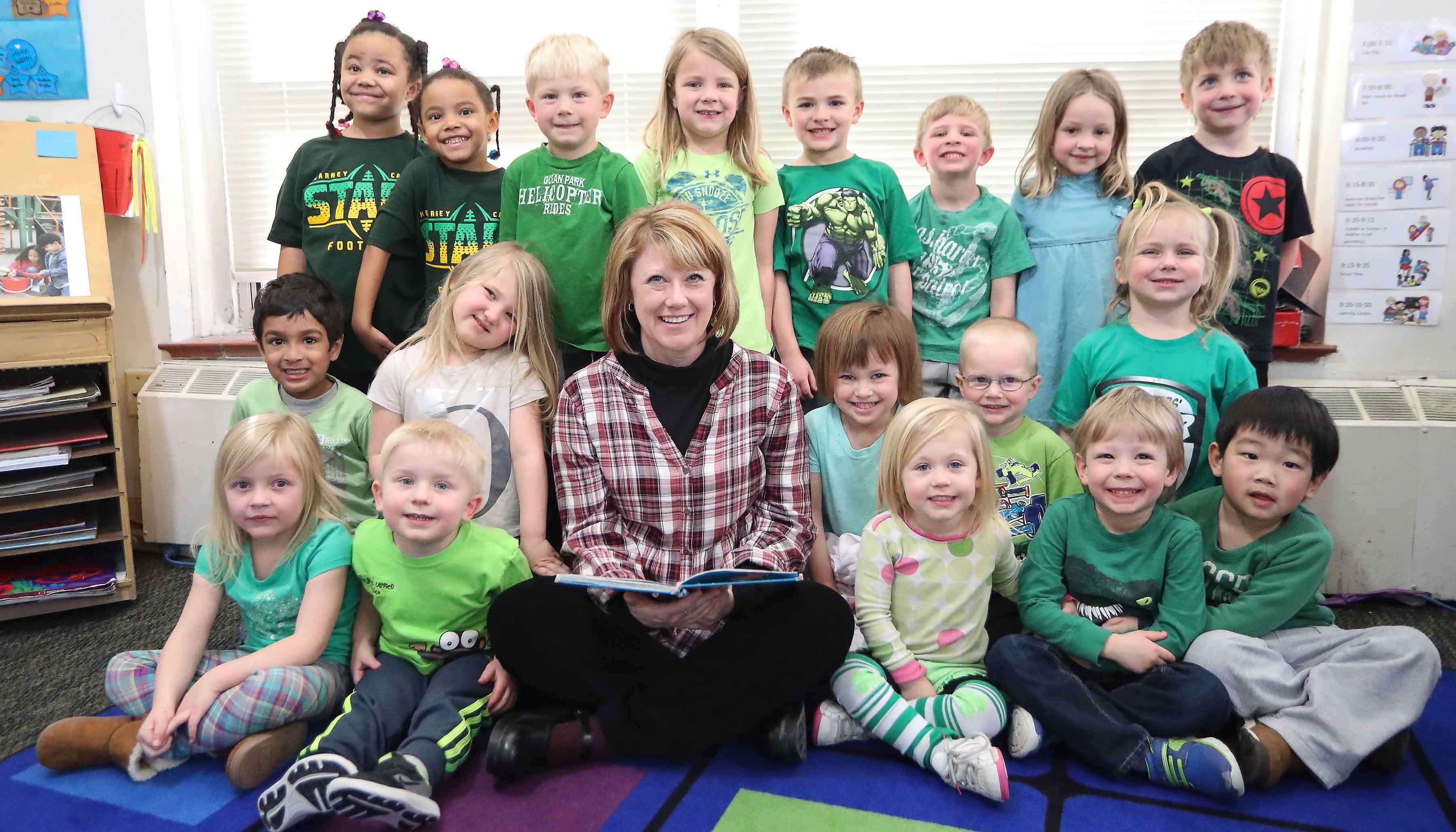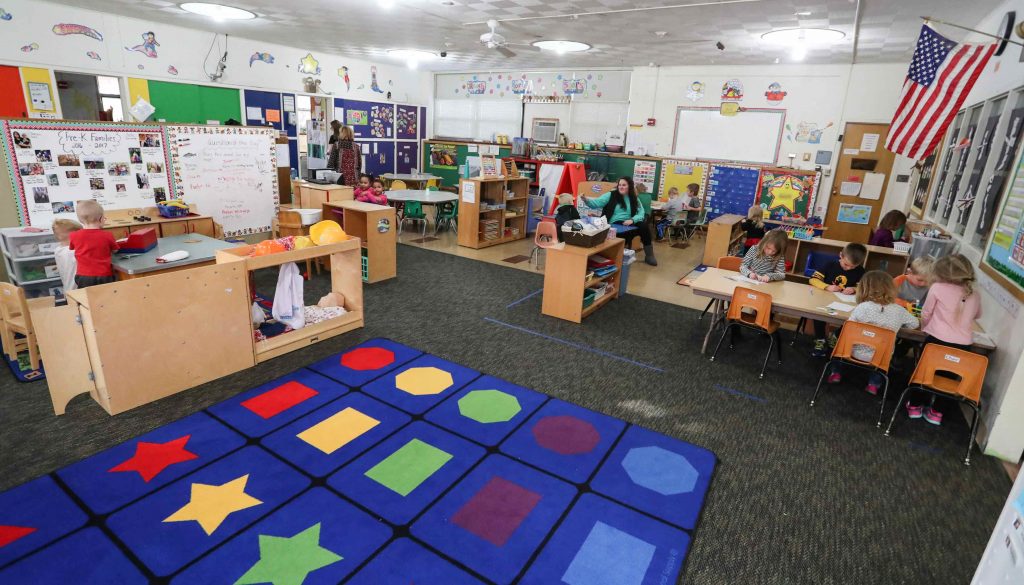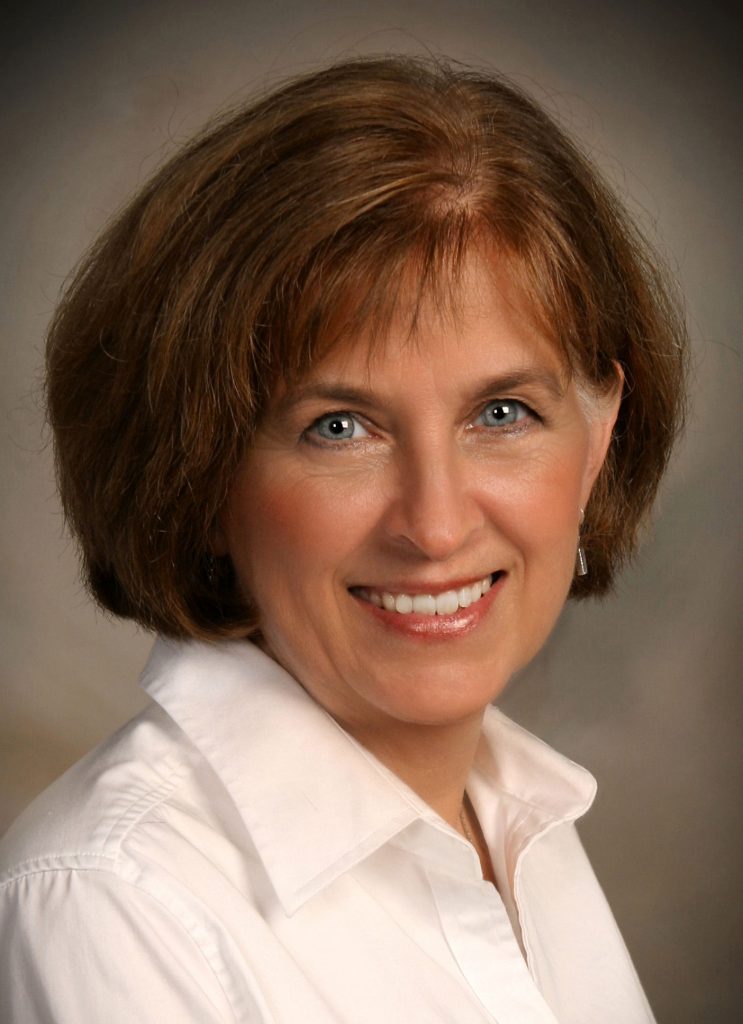
By ANDREW HANSON
UNK Communications
KEARNEY – The Child Development Center at UNK has been housed in dated, crammed confines of the Otto C. Olsen Building for many years.
Originally designed to be a space for toddlers to attend pre-school for two to three hours a day as a child development lab, the facility evolved in the early 2000s with a new focus on child development, where kids can spend up to 10 hours a day while their parents work or attend school.
The childcare center currently serves 50 children of university faculty, staff and students. It also has a waiting list of 75.
“People were telling me that they were going to be having a baby before they told their families just because they wanted a spot here,” said JoAnna Cordova, the center’s director.
The space concerns and childcare shortages at UNK soon will improve. On Jan. 27, the University of Nebraska Board of Regents approved a .4 million, 17,800-square-foot project to be completed in June 2019 at the new University Village development south of campus.

The new Early Childhood Education Center will have a capacity for 152 children from infant to age six. And the education starts right away. “We have learning activities for our little babies all the way through,” Cordova said.
The kids participate in literacy and math activities. They also work with UNK’s physical education students to begin developing fine and large motor skills.
“We try and incorporate learning throughout the whole course of the day,” Cordova added. “Yes, we are going to provide childcare, but the experiences the children get are so educationally enriched.”
COLLABORATIVE INITIATIVES
While there has always been the desire to integrate curriculum from various disciplines across campus, because of space limitations it just wasn’t feasible.
UNK students majoring in elementary education and communication disorders are among those currently utilizing the small space. Nursing students have assisted with immunization clinics and provided health lessons. Beyond that, student interaction with the Child Development Center has been limited.
That’s no longer the case.
“We’re going to be able to use this facility more easily as part of the content in our classes,” said Sheryl Feinstein, dean of the College of Education. “All four colleges plan to use it as far as observations, internships or practicums.”
Other fields such as family studies, special education, psychology and social work will benefit from the Early Childhood Education Center, too.
“There are commitments from everyone that they want to use this facility. and that they plan to embed it in their classes and make their classes richer and more meaningful to the students,” Feinstein added.
By providing tools such as observation time, the facility also gives the College of Education the ability to potentially offer more teaching endorsements.
For instance, the college is exploring the option of adding a family and consumer science endorsement, which requires a lab in a childcare center – something previously not possible.
“This has been an unexpected benefit,” Feinstein said. “I’m sure there will be more. Once we actually have this, I foresee a number of new partnerships.”

OPEN TO THE COMMUNITY
One of the most pressing issues for the Child Development Center has been the restriction on the number of children the facility is able to take in.
While it currently holds 50, the new Early Childhood Education Center will have a capacity of 152.
The 100 additional spots will help alleviate the stress of new university employees looking for childcare.
“We have a lot families that come to campus for teaching positions from all over the country,” Cordova explained. “I feel horrible when we have these people that are hired in May or June and want their children to come here, but they can’t because there are 40 people ahead of them on the waiting list.”
The center will also combat the shortage of quality childcare in the Kearney area, Cordova said.
And by opening the doors to the community, it will diversify the group of children attending.
“I’m so excited to have the chance to bring in diversity here because that’s so important in education and reflective of our world,” Feinstein said. “We’ll be able to have children with special needs, which we aren’t able to serve right now. Our kids will get more ways to interact with a variety of children.”
NEW LOCATION
With the need for a bigger facility, a move to University Village across Highway 30 became a necessity.
In it’s current location inside Otto Olsen, children are right next to the library, theater and gymnasium inside the Health and Sports Center.
Cordova is hoping the increased distance of the Early Childhood Education Center won’t deter UNK students and faculty from being involved with the kids.
“Moving out there is going to change that collaboration. They’re probably going to have to come to us,” she said. “It’s my hope that they don’t see this as being too much of a deterrent and they still want to come see us, because it’s really important for the kids to have those types of social interactions.”
Tt the same time, with nearly 18,000 square feet to work with, the new space will be much more practical.
At the old site, not every room had a sink. Feinstein described the layout like a rat’s maze.
The new facility will still have the children separated by age, but every classroom will now have necessities like a sink, eating area and learning space.
“The kids aren’t always going to be having to leave the room or eat in shifts,” Cordova added. “It will be more of a home environment.”
-30-